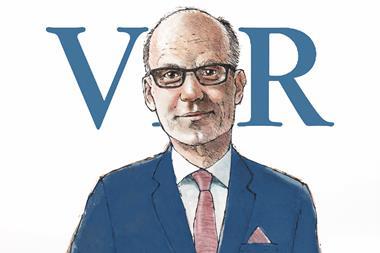The leader of the Finnish Centre for Pensions (Eläketurvakeskus, ETK) has weighed into the debate on whether investment rules need to change for the private-sector occupational pension providers, given demographic pressure on the system, arguing in favour of allowing more equities in portfolios.
Allan Paldanius, director of the ETK – the central body of the Nordic country’s statutory earnings-related pension system – said if equities weightings were increased by 10 percentage points, it would be possible to achieve an average 0.3 percentage point lift to returns.
In turn, that could lower occupational pension premiums by an average of 0.8 percentage points, he said in the latest issue of the organisation’s newsletter Työeläke (Occupational Pensions).
However, while increasing return expectations would be important, it was not the whole solution, Paldanius said.
“You also have to tolerate risks – fluctuations in returns and pension payments. Possible ways of adapting to these should be considered in advance,” the ETK director said.
He posited the idea as one option to strengthen pension financing, which is under pressure as the financial dependency ratio increases due to an ageing population in Finland.
“Now we have two pensioners per three working people, but in a few decades, the ratio will be four to five,” he said.
Paldanius compared the way public-sector occupational pensions were financed to the private-sector system, saying that on the public-sector side there was no pressure to increase the payment level, as there was in the private sector, but that the payment level for public-sector pensions was higher.
Pension investments in the public-sector occupational system were not bound by the solvency regulation that private-sector pension insurers had to adhere to, he said.
“The distribution of public-sector investments between different investment targets is not very different compared to private occupational pension insurers, but in public sector investments, for example, timing in the market has probably been used more flexibly,” Paldanius said.
Solvency regulations for Finland’s private-sector occupational pension providers are constantly under reform, with the reforms of 1997, 2007 and 2017 having increased pension insurance companies’ investments in equity.
Between 1997 and 2022, allocations to equity and equity-like instruments rose to 62% from around 11%.
Changing investment regulations as a way of easing current pressures in the pension system has also been suggested by Ilmarinen’s investments chief Mikko Mursula.
Finland’s four pension insurance companies, the mainstays of private-sector earnings-related pension provision, managed €147bn of assets at the end of March, according to the latest figures from lobby group TELA.
Their average equity allocation at that point was 47.1%, compared with 50.7% for the local-government pensions provider KEVA.
Read the digital edition of IPE’s latest magazine






































No comments yet